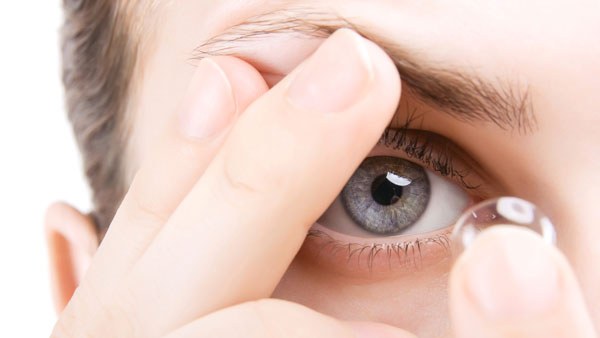Since the inception of eyeglasses and the thermometer, medical technology has progressed significantly. A growing and wealthier middle class along with more people globally are making the healthcare field change. The World Economic Forum has shared that over half of those working in healthcare are expected to use new technology in the years to come. A big portion of this change comes from new healthcare gadgets fitting smoothly into regular folks’ everyday lives.
But what classifies as a healthcare gadget, and how do these devices alleviate challenges in the healthcare sector? Digital therapeutics, devices reliant on sensors that monitor and alert individuals about healthcare issues, lead this technological shift. Most contemporary healthcare gadgets are powered by mobile applications that can be installed on smartphones. The influence of healthcare devices and smartphone apps has significantly transformed the conventional notion of maintaining good health. Continue reading to discover crucial healthcare gadgets and their roles in the lives of the general populace.
Distinguishing between hospital equipment and healthcare gadgets involves considering their respective purposes, applications, and functionalities within the healthcare sector:
Hospital equipment and healthcare gadgets serve distinct purposes within the broader healthcare landscape. While both contribute to patient care, they differ in their scope, functionality, and the settings in which they are typically used. Here’s a breakdown of the key differences:
Purpose and Functionality:
Hospital Equipment: Hospital Equipment contains big, specific medical tools used in hospitals. For instance, MRI machines, X-ray machines, surgical tools and ventilators. These tools are mainly for diagnosing, treating, and monitoring patients inside medical facilities. On the other hand, Healthcare Gadgets are usually smaller, portable devices. They’re meant for personal use or for health tracking outside of hospitals. These might be fitness trackers, smartwatches for health check-up, home blood pressure monitors, and digital thermometers. Healthcare gadgets often help in preventing diseases, wellness, and managing long-term issues.
Setting:
Devices for health, like gadgets, need expert skills to use. Professionals in health care usually handle them. Health Gadgets: These are made for many places – your home, your work, or while you’re out. Anyone can use them to check and control their health. You don’t need a doctor or nurse for this. Let’s talk about engaging with patients and users.
Hospital Equipment: Doctors, nurses, technicians use these, all of whom are trained. Patients often just receive the care from these pros. Health Gadgets: With these, you can be active in managing your health. You can check important health signs, keep track of your fitness, and get advice made just for you. Health gadgets help you take health into your own hands.
Scale and Complexity:
Hospital Equipment: Often large, complex, and specialized machines requiring significant infrastructure and maintenance. They are designed to handle a wide range of medical conditions and procedures.
Healthcare Gadgets: Generally smaller, less complex, and user-friendly. These devices are tailored to specific health-related functions, making them accessible and manageable for individual users.
1. ECG Monitor from AliveCor
AliveCor is a convenient medical device that can be employed at any moment to assess your heart’s well-being through an ECG examination. This gadget comprises a multi-sensor strip utilizing wireless connectivity to connect to a mobile application.
Initiating the application involves positioning the dual-point sensor contraption in proximity to the mobile device. Position both index fingers on the strip with each hand. In less than 30 seconds, the application monitors the heart’s rhythms and exhibits an ECG chart on the display. Additionally, you have the option to produce a hard copy of this report for your healthcare provider.
2. Asthma Monitor by AirSonea
AirSonea is a device that tracks asthmatic symptoms. This technology captures your respiratory pattern and the whooshing of air as you inhale deeply. AirSonea assesses your breathing patterns to ascertain the presence of asthma. It is also advantageous for overseeing treatment based on the patient’s existing conditions.
The user situates the device close to their nostrils and breathes normally. The device records the information and transmits it to the mobile application, which processes it in accordance with its parameters and needs.
3. Dario Glucose Checker
Dario is an intelligent device that operates through a smartphone app. Wireless technology connects the gadget to the mobile app. You need to insert a blood test strip into the device and employ the lancer to obtain a small blood sample. The data is sent to a mobile app pre-set with nutritional and insulin dosage routines. The mobile app analyzes the information, revealing the overall sugar level and insulin dosage recommendation.
4. DNA Biomeme Monitor
This monitor is an outstanding tool for small clinics unable to invest in DNA testing equipment. This compact device, managed by a smartphone app, morphs into a potent DNA-oriented illness diagnostic tool. It employs Quantitative Polymerase Chain Reaction (qPCR) instantly. This gadget is compatible with both Android and iPhone smartphones.
5. Tinke Respiratory Monitor
Tinke, created by Zensorium, is a robust fitness tester capable of measuring your heart rate, respiratory rate, oxygen saturation ratio, heart rate variability, and more. This gadget is specifically designed for iOS smartphones. The user positions their fingers on the device, which detects the heartbeat and other biometrics. This information is then scrutinized and displayed on the mobile device’s screen.
6. Bodyguardian Cardiac Monitor:
The patient can receive distant medical and emergency aid using a wireless cardiac monitoring device. Bodyguardian is a tool connected to the user, linking to the internet via wireless communication. A physician can monitor the patient’s health and offer remote assistance in emergencies. This device was collaboratively developed by Mayo Clinic and Preventice Systems.
7. Portable Ultrasound By Dr.Sono:
Dr.Sono offers a top-notch Portable Ultrasound tool. It changes how we do medical check-ups. This neat gadget aims for ease and speed. It gives a handy way to do ultrasound tests. You can do these whether you’re inside a clinic or outdoors. Dr.Sono’s Portable Ultrasound lets you take pictures of your body’s insides anytime, anywhere. Packed with top ultrasound tech, it shows clear, live images of your insides. Being portable doesn’t lessen its power. It’s perfect for those in health services who need quick and sure results in different places. To use Dr.Sono’s Portable Ultrasound, just link it to a tablet or cellphone. Its user-friendly screen makes it easy to do ultrasounds. The tool’s wireless connection sends data smoothly to the linked mobile app for more checks.
This portable ultrasound solution is not only convenient for healthcare providers but also facilitates point-of-care diagnostics in remote or resource-limited environments. Dr.Sono’s commitment to innovation in medical technology is evident in this user-friendly and efficient Portable Ultrasound device, making advanced imaging accessible whenever and wherever it’s needed.
In Conclusion
The most advanced home medical devices are crafted by teams of clinical experts utilizing state-of-the-art technology. Always consult your doctor if you have a diagnosed ailment or suspect an unidentified condition. The health devices outlined here are primarily useful for tracking your overall well-being. If a medical consultation is necessary, these at-home health devices can provide valuable data for discussion with healthcare professionals.





